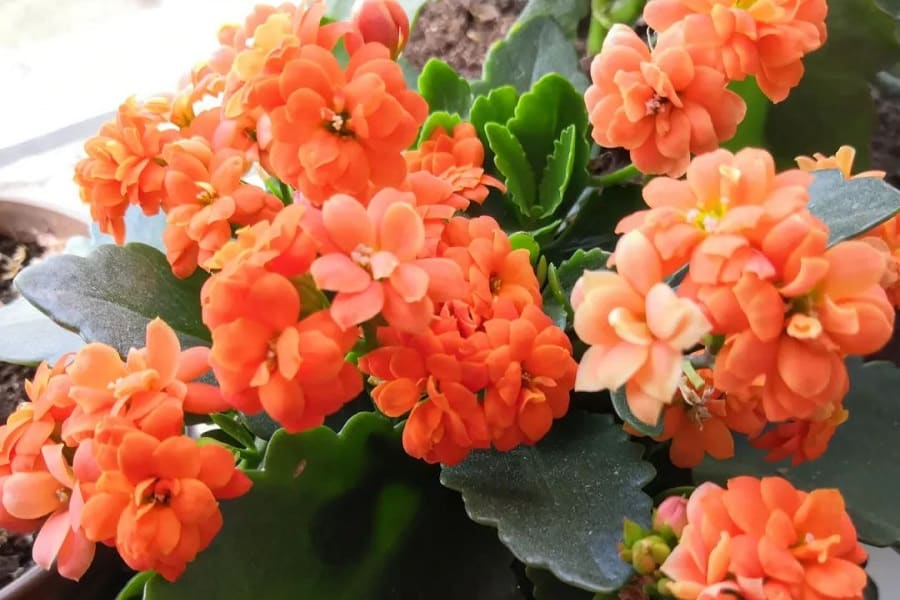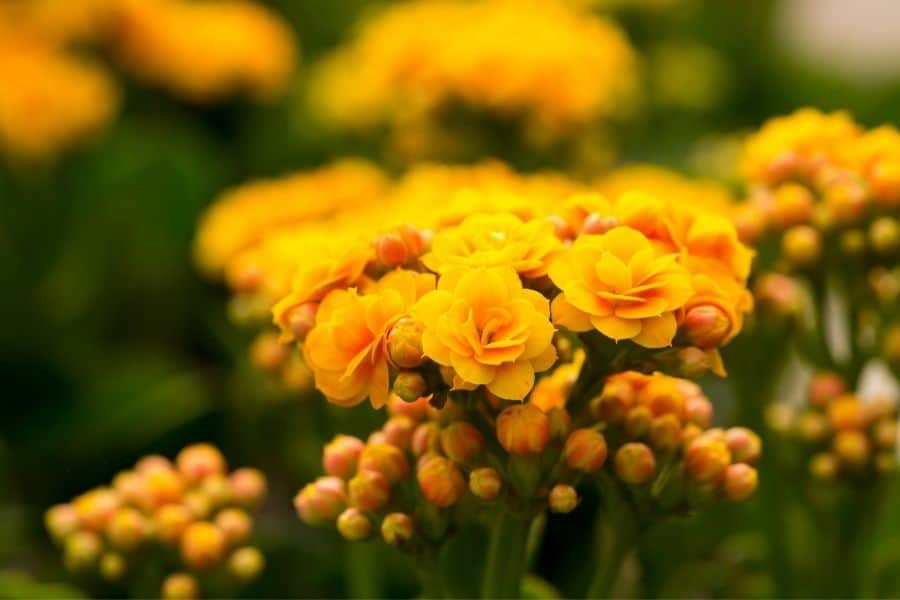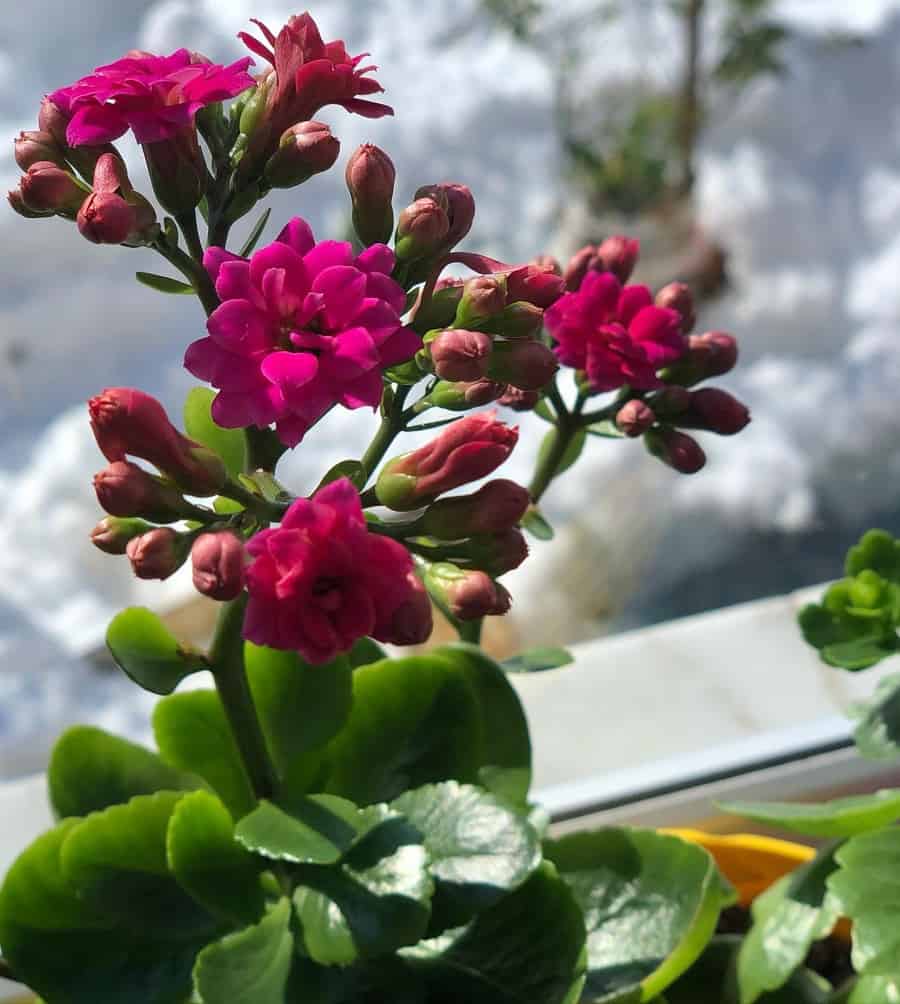Kalanchoe Propagation Made Simple: A Foolproof Guide for Success
As winter settles in, what better way to infuse vibrant hues into the cold season than with the dazzling blossoms of Kalanchoe? With an extensive array of flowers that can bloom for months, this succulent stands as a testament to nature’s resilience.
Don’t be surprised if your admiration for this remarkable plant compels you to expand your collection. The good news is that propagating Kalanchoe is a breeze, regardless of your gardening expertise. Whether you possess the popular Kalanchoe blossfeldiana variety or have another cherished species, this foolproof technique will help you multiply your plants effortlessly.
Get ready to unlock the secrets of Kalanchoe propagation and cultivate an endless oasis of beauty in your very own garden.

Contents
Demystifying Kalanchoe Propagation: The Art of Reproduction
Observe a mature Kalanchoe succulent closely, and you may witness the wonder of new life unfolding. These resilient plants often produce offsets, miniature replicas that emerge at the leaf tips, relying on the parent plant to nurture their growth and develop their own roots.
While this method surely showcases nature’s ingenuity, it places a considerable burden on the parent plant, demanding significant energy expenditure. Thankfully, there is a quicker and easier way to propagate these delightful succulents: through self-propagation. Kalanchoe plants can be successfully reproduced using offsets or stem cuttings as the primary techniques.
Properly executing precise cuts and strategically planting them sets the stage for the magic to happen. The wounded portions sprout roots, giving rise to a brand-new plant, while the cutting itself draws sustenance from the succulent leaves, fueling its initial growth phase.
As remarkable as it may be, Kalanchoe can also reproduce through seeds, although this method tends to be more challenging and less reliable in general. However, for those seeking a thrilling venture, experimenting with seed propagation can offer a unique gardening experience.

Necessary Materials
- One kalanchoe plant (healthy)
- A clean, sharp knife or clippers
- A pot, preferably clay
- Cactus and succulent soil
- Rooting hormone powder (optional)
- Clear plastic bag
- Watering can or misting bottle
The Method
If you’ve been eager to expand your Kalanchoe collection, the propagation process will soon become your favorite gardening adventure. Luckily, Kalanchoe follows a fairly standard succulent propagation technique, wherein stem cuttings or offsets are the primary methods, typically rooting within 15-20 days.
Step 1: Obtaining the Perfect Cutting
Spring and summer prove to be the ideal seasons for Kalanchoe propagation. During this period, when the plant is not in bloom, it directs its energy towards storing vitality for future blossoms. By utilizing propagation techniques, you can redirect a portion of this stored energy towards new growth.
Select a mature and healthy stem that is devoid of flowers. It should feature at least two leaves and stretch a few inches in length. With a clean cut, just above a stem node or leaf, employ clippers or a knife to separate the cutting. Alternatively, if using an offset, carefully detach it from the parent plant, ensuring it retains a few leaves for survival, much like stem cuttings.

Utilize propagation as an opportunity to trim back leggy stems that may result from etiolation, a common issue with Kalanchoe. Clip at the base of the leggy growth, remove lower leaves, and trim the bottom if necessary, ensuring the cutting is preparation-ready. Pruning the stem prompts the parent plant to undergo regeneration where you made the cut.
Step 2: Allowing the Cutting to Dry
After obtaining the cutting, it’s crucial to allow it to dry out. This drying process forms a callous, safeguarding the stem from potential infections or rot. The drying time varies from 1 to 3 days, depending on the stem thickness.
Once the wound has healed, dip the end of the cutting into a rooting hormone powder. This encourages healthy and swift rooting while fortifying the chances of successful propagation.
Step 3: Planting with Precision
Succulents thrive in well-draining soil, detesting excess moisture that may lead to root rot. Consider purchasing cactus and succulent soil from any gardening supply store, or create a mixture of 2 parts sand and 1 part peat moss (perlite and coconut fiber coir can serve as excellent alternatives).
Adjust the ratio to achieve moist soil when watered, striking a balance that prevents over-saturation. If your selected pot is spacious enough, you can plant multiple Kalanchoe cuttings together, keeping in mind their growth potential. Fill the chosen pot with moistened soil.
Gently poke each cutting into the soil, ensuring the stems are upright, and lightly pat the soil to secure them. Humidity plays a vital role in the success of your Kalanchoe cuttings, so cover the container with a clear plastic bag. This creates a more humid environment for the plant’s initial stages. Make a few slits or holes in the bag to facilitate air circulation, and remove it once the cutting shows active signs of growth.
Step 4: Thriving with Care
Place the propagated cutting in bright, indirect light. A south-facing window commonly proves to be the ideal location for succulents in most households. However, take caution to shield the leaves from direct sunlight, as they can be susceptible to sunburn. Ensure the temperature remains above 50 degrees Fahrenheit at all times.
Keep the soil consistently moist through light watering or using a spray bottle. Only water the Kalanchoe cutting when the soil has begun to dry out. Once you observe stem and leaf growth, you can transition to regular care techniques suitable for mature Kalanchoe plants.
Kalanchoe Propagation Aftercare

Providing your newly propagated Kalanchoe with proper care is vital to ensure its health and vibrancy. Understanding its light requirements, temperature preferences, watering regimen, and fertilization needs will set the stage for a thriving succulent.
Lighting: Indirect, bright light is crucial for your kalanchoe’s well-being. Insufficient exposure to sunlight can lead to etiolation, where the plant grows towards the light source, resulting in an imbalanced appearance. To prevent leaf burn, when placing your Kalanchoe outdoors (in zones 9-11), ensure it is shaded adequately.
Temperature: Normal house temperatures suffice for most Kalanchoe varieties. However, if you decide to keep it outside, shield it from extreme weather conditions and fluctuations.
Watering: Your Kalanchoe appreciates a thorough watering, followed by a period of drought as the soil dries out. Exercise caution not to overwater this succulent, as it is prone to root rot. Avoid getting carried away with frequent watering, as it can be detrimental to your plant’s survival.
Fertilization: To stimulate flowering and growth, apply fertilizer during spring and summer. Opt for a balanced or phosphorous-leaning fertilizer specifically formulated for succulents. Slow-release granules or diluted liquid fertilizers can work effectively. Administer the fertilizer at the start of the season or every other week, based on the product instructions.
Endless Possibilities: Once you’ve mastered the art of propagation with Kalanchoe, your gardening journey will undoubtedly expand. Feel free to experiment with other succulents using the same propagation technique and unlock the endless possibilities that await you.
Can I Root Kalanchoe Cuttings in Water?
Kalanchoe cuttings will do best when planted in soil. Some people try to root them in water, but the process is much more difficult than it is for cuttings taken from other plants.
The most important factor to take into consideration when rooting Kalanchoe cuttings in water is that they are not able to form their own roots, so they need help from you.
Other factors include your climate, potting medium, and watering needs.
Does Kalanchoe Spread?
Kalanchoe plants are not invasive plants. They spread by seed, meaning that they would need to be planted in your garden again in order to spread.
Final Thoughts
Embarking on the endeavor of Kalanchoe propagation promises abundant rewards. This remarkable succulent offers a vibrant array of flowers that can grace your garden for months, even during the chilly seasons. With its broad, chunky deep green leaves, it possesses an inherent beauty that persists even when not in bloom.
Knowing how to propagate Kalanchoe and other succulents, in general, will help you grow as many as you want to. Within this comprehensive guide, we have provided you with a complete roadmap to successful propagation.
